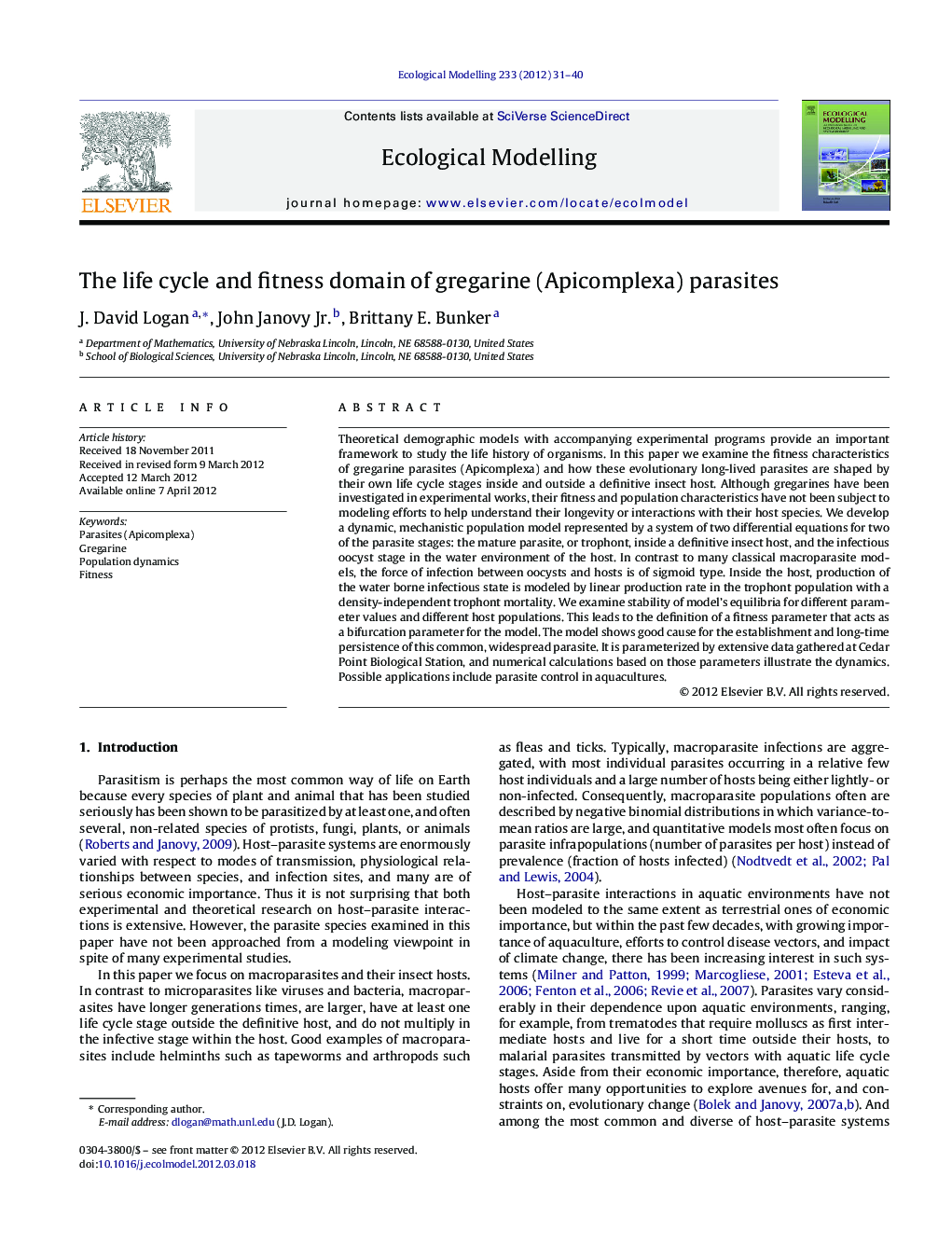| Article ID | Journal | Published Year | Pages | File Type |
|---|---|---|---|---|
| 4376479 | Ecological Modelling | 2012 | 10 Pages |
Theoretical demographic models with accompanying experimental programs provide an important framework to study the life history of organisms. In this paper we examine the fitness characteristics of gregarine parasites (Apicomplexa) and how these evolutionary long-lived parasites are shaped by their own life cycle stages inside and outside a definitive insect host. Although gregarines have been investigated in experimental works, their fitness and population characteristics have not been subject to modeling efforts to help understand their longevity or interactions with their host species. We develop a dynamic, mechanistic population model represented by a system of two differential equations for two of the parasite stages: the mature parasite, or trophont, inside a definitive insect host, and the infectious oocyst stage in the water environment of the host. In contrast to many classical macroparasite models, the force of infection between oocysts and hosts is of sigmoid type. Inside the host, production of the water borne infectious state is modeled by linear production rate in the trophont population with a density-independent trophont mortality. We examine stability of model's equilibria for different parameter values and different host populations. This leads to the definition of a fitness parameter that acts as a bifurcation parameter for the model. The model shows good cause for the establishment and long-time persistence of this common, widespread parasite. It is parameterized by extensive data gathered at Cedar Point Biological Station, and numerical calculations based on those parameters illustrate the dynamics. Possible applications include parasite control in aquacultures.
► We present the first model for an ancient and widespread insect/parasite system. ► The gregarine/damselfly model includes stability analysis of fitness states. ► Stability is retained over a wide range of parameter values. ► The model is parameterized by extensive field data. ► Unlike some parasite models, infection rate is sigmoid and production rate is linear.
